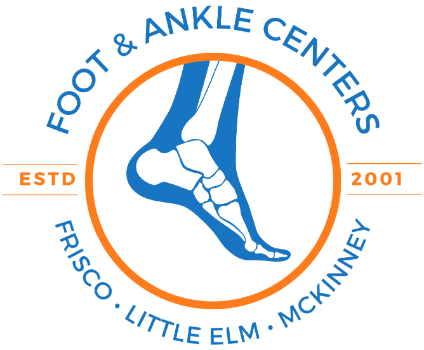Ankle Dislocation Care | Foot & Ankle Centers
Thursday, July 17, 2025 | By: Foot & Ankle Centers of Frisco and Plano
Did you know that a dislocated foot or ankle can cause severe pain and long-term complications if not treated quickly? Recognizing the signs and knowing the treatment options is essential for athletes and active individuals alike. Dr. Knapp, Dr. Tavakoli, and Dr. Treleven at Foot & Ankle Centers in Frisco, Little Elm, and McKinney, Texas, provide expert care to help you understand dislocations, manage immediate treatment, and guide you toward a full recovery—getting you back on your feet safely and swiftly.
Understanding Dislocated Foot and Ankle Injuries
A dislocated foot or ankle occurs when the bones in the joint are separated from their normal position. This situation often arises from sudden trauma, such as falls, sports injuries, or accidents. Understanding how to identify the signs and symptoms of a dislocation can pave the way for effective treatment and recovery.
Signs and Symptoms of a Dislocated Joint
- Visible Deformity: One of the most apparent signs is an unusual appearance of the foot or ankle, where the joint looks misaligned.
- Swelling and Bruising: Severe swelling will usually develop within minutes, accompanied by bruising around the affected area.
- Intense Pain: This is usually immediate and can worsen when attempting to move the joint.
- Inability to Move: Dislocated joints often result in a complete inability to move the affected limb.
- Numbness or Tingling: If nerves are affected, you may experience abnormal sensations in the foot.
Immediate Steps to Take
If you suspect a dislocation, it’s crucial to act quickly and follow these initial steps:
1. Do Not Attempt to Realign: Never try to push the bones back into place yourself. This could cause further injury.
2. Immobilize the Joint: Use a splint or make-shift support to keep the joint stable and prevent further movement.
3. Ice the Area: Apply ice packs to reduce swelling and alleviate pain. Always use a cloth or towel between the ice and skin to avoid frostbite.
4. Seek Immediate Medical Care: This is paramount. At Foot & Ankle Centers of Frisco, Little Elm, & McKinney, we offer same-day appointments for urgent issues.
What to Expect During Medical Evaluation
At a healthcare facility, your dislocated joint will likely undergo a physical examination followed by imaging tests such as X-rays. This evaluation aims to determine:
- Extent of the Dislocation: Understanding how far out of place the joint is.
- Damage Assessment: Checking for damage to ligaments, tendons, and surrounding tissues.
Treatment Options at Foot & Ankle Centers for Dislocated Joints may include:
1. Realignment of the Joint
Often, the doctor will perform a procedure called reduction, wherein they will gently guide the bones back into their proper position. This usually requires local or general anesthesia to minimize discomfort.
2. Immobilization
Once realigned, the joint needs stabilization, which may involve:
- Splinting: To hold the joint in place.
- Casting: If the stability needs more maintenance or if there are fractures associated with the dislocation.
3. Rehabilitation and Physical Therapy
Rehabilitation is essential in recovering strength and flexibility after a dislocation. Here’s what you can anticipate:
- Physical Therapy: This often begins shortly after immobilization is removed. Initially, therapy will focus on gentle movements and gradually increase in intensity.
- Strength-Building Exercises: These exercises target the muscles surrounding the joint to provide better stability and support.
- Functional Training: Eventually, training may include movements that mimic daily activities or athletic performances to ensure you're ready for a return to normal activities.
When is Surgery Necessary?
While most dislocations can be treated conservatively, sometimes surgical intervention may be necessary. If that's the case one of our certified podiatrists at Foot & Ankle Centers can help.
- Severe Damage: If ligaments or bones are significantly damaged, surgery may be needed to repair the injury.
- Chronic Dislocations: Some individuals may have recurrent episodes of dislocations due to insufficient stabilization. Surgical solutions might involve tightening ligaments or anchoring joints more securely.
Living and Coping After a Dislocation
It’s normal to have concerns about your mobility and pain management after a dislocated foot or ankle. Here are some strategies:
- Follow Medical Advice: Always adhere to the home care instructions given by your healthcare provider at Foot & Ankle Centers.
- Pain Management: Over-the-counter pain relief medications such as ibuprofen or acetaminophen can help alleviate pain during the recovery process.
- Gradual Return to Activity: Listen to your body, and don’t rush the process. Gradually increase your activity level as advised by your healthcare team.
Prevention Strategies
Understanding how to prevent dislocations is imperative, especially for individuals who are active or play sports:
- Proper Footwear: Wearing shoes that provide adequate support and fit well can help to prevent injuries.
- Warming Up and Stretching: Always incorporate a warm-up routine before engaging in physical activities.
- Strength Training: Regular exercises focusing on building strong muscles around the joints can help in injury prevention.
Conclusion: So Where Do We Go From Here?
Understanding dislocated foot and ankle injuries is crucial for anyone regardless of their activity level. Being informed about signs, seeking immediate medical attention, and adhering to the recommended treatment protocols can ensure that one’s recovery is swift and effective. If you experience any issues related to foot and ankle pain or injury, don’t delay in seeking care. Our Team at Foot & Ankle Centers is here to get you back on your feet!


Leave a comment
0 Comments